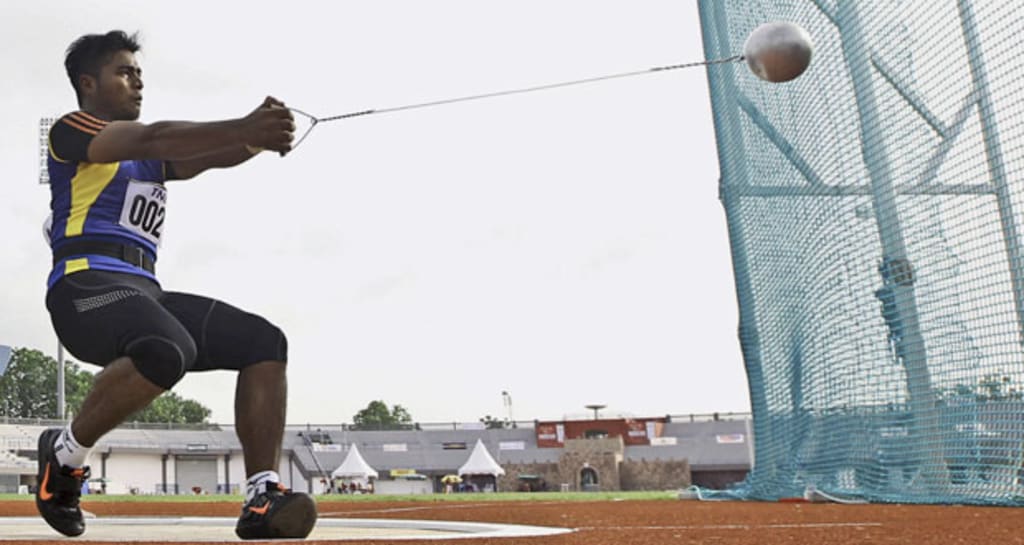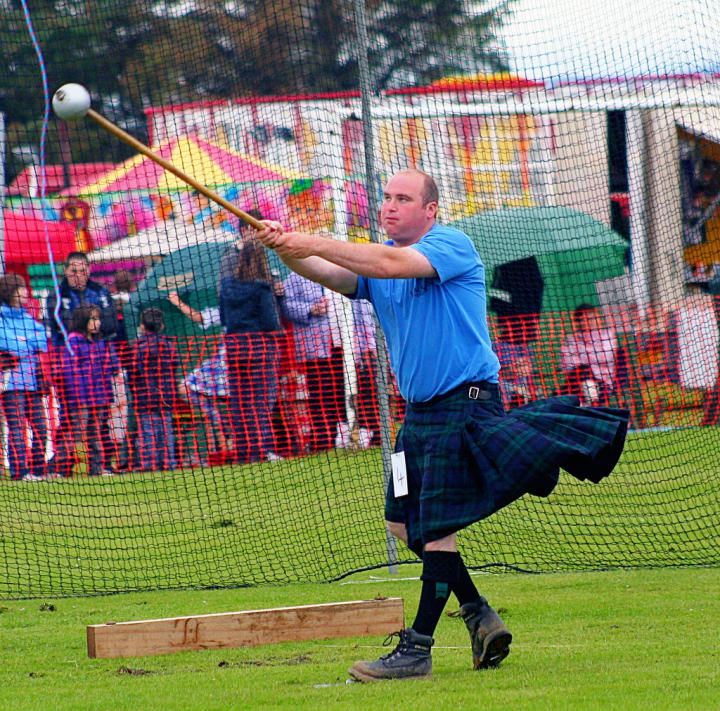The origin of hammer throwing
There is a strong link between the Highland Games and modern track and field

When watching the hammer throwing event at modern athletics competitions such as the Olympic Games, one thought that crosses many minds is that the thing being thrown does not look much like a hammer! That metal ball on the end of a flexible wire would be the last thing one would choose for knocking in a few nails!
However, if you start thinking about sledgehammers rather than the claw variety, things begin to fall into place. Replace the wire of the throwing hammer with a solid handle, and change the shape from a ball to a hammerhead, and the two kinds of hammer suddenly look to be much more alike. You can now imagine that it would be a good contest for well-muscled men, wielding sledgehammers as part of their work in a factory or on a building site, to see how far those hammers could be thrown and to devise techniques for increasing the distance.
There are ancient legends that describe Norse gods throwing hammers and thunderbolts in equal measure, and stories of contests involving the throwing of heavy objects go back many centuries. King Henry VIII, who in his youth was keen to show off his athletic prowess at any opportunity, was reputed to have been adept at sledgehammer throwing.
Hammer throwing as an organised athletic event probably started with the Highland Games in Scotland. Various Highland Games are held at a number of locations every year between May and September and are highly popular as both athletic and cultural events. Their origins probably go back to the days of the clans when clan members would challenge each other in feats of speed and strength, although the modern Highland Games is at heart an invention of the Victorians, reflecting the Royal Family’s love of all things Scottish, tartans and all.
The strength events are at the core of any Highland Games, hence the caber toss and tug-of-war, but hammer throwing is also one of the most popular events, and one that has featured from the beginning of the Games as we now know them. The hammer in question differs from the “Olympic” hammer in that there is a four-foot wooden shaft instead of a wire, and the balls weigh 22 pounds (for men) or 16 lb (for women), as opposed to 16 pounds and 9 pounds respectively. However, the length of the wire on the Olympic hammer is almost the same as the shaft of the Highland hammer.
The technique of Highland hammer throwing is somewhat different from in modern athletic competition. The end of the shaft is held in both hands at head height as the thrower spins round on the spot and throws the hammer over his or her shoulder. In athletic contests, the thrower moves across a circle as they revolve, with the hammer starting on the ground and being thrown upwards and outwards on the final revolution. Needless to say, the distances achieved with sophisticated equipment, facilities and techniques are much greater than those to be seen at Highland Games events, but the spectacle at the latter is no less exciting.

Hammer throwing as described in the previous paragraph, with standardised rules, dates from 1875, and the modern hammer, with a steel wire and handle, had been introduced by the time that the event first featured in the Olympic Games, in 1900. Techniques and materials have changed over the years, but the basic concepts have remained the same.
Strangely enough, although “old fashioned” hammer throwing has continued to the present day in the Highland Games, British competitors have rarely featured in Olympic competition, this being an event that has relatively little support at school or club level in this country.
About the Creator
John Welford
I am a retired librarian, having spent most of my career in academic and industrial libraries.
I write on a number of subjects and also write stories as a member of the "Hinckley Scribblers".






Comments
There are no comments for this story
Be the first to respond and start the conversation.